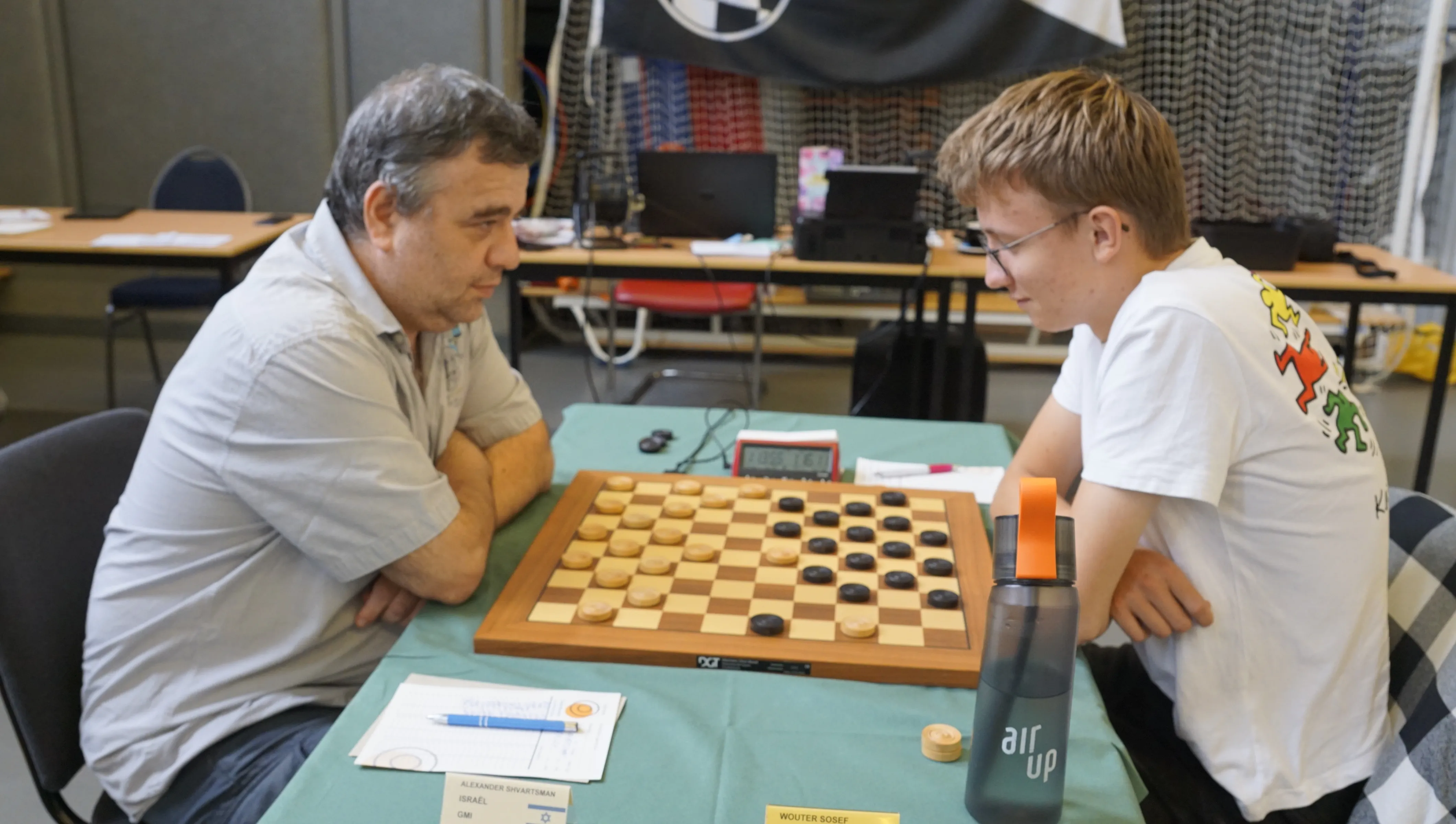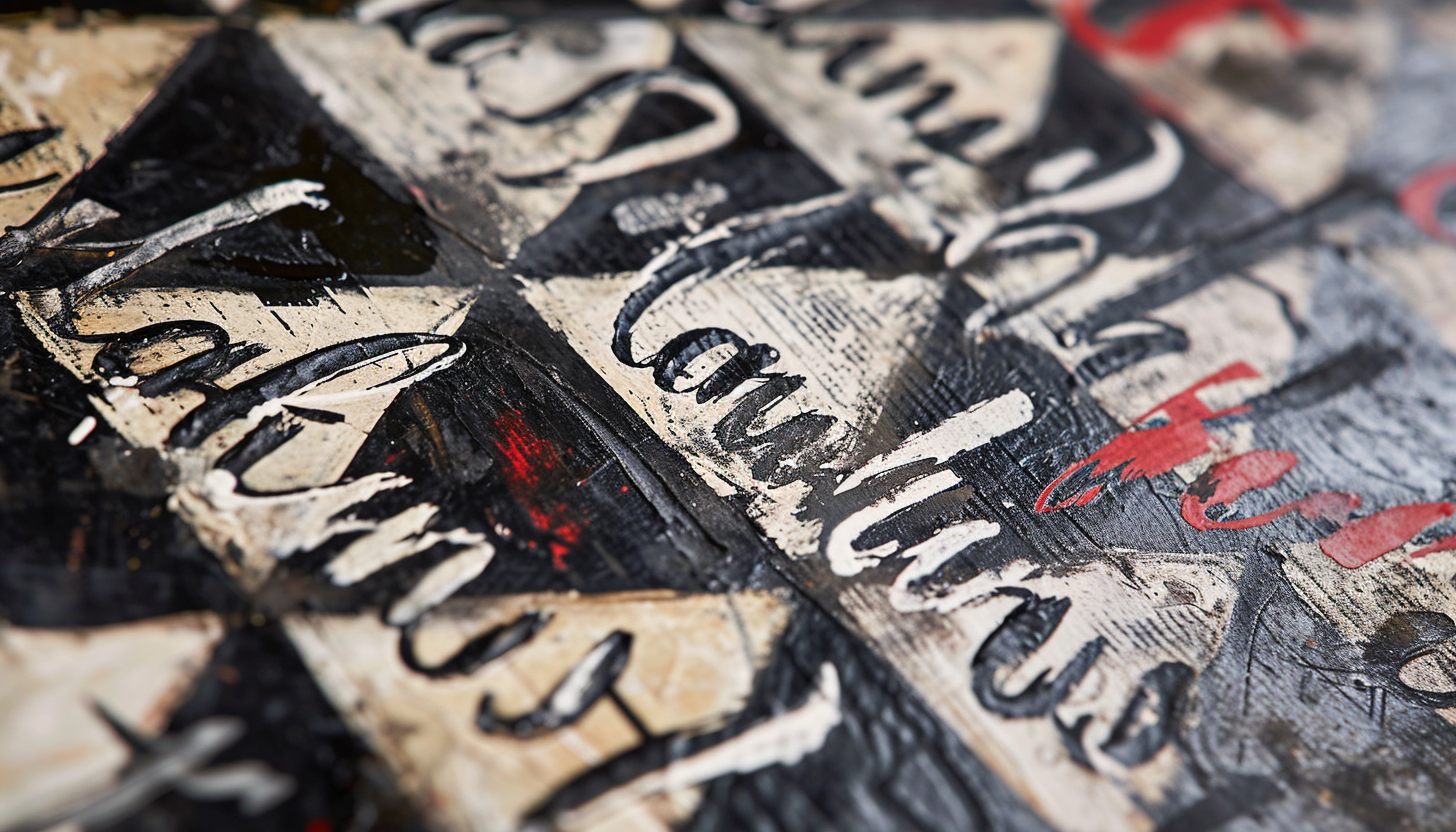Alexander Shvartsman (l.) plays against Wouter Sosef during Hoogeveen Open 2023. Photograph: Zainal Palmans
Van der Stap - Shvartsman

„Sometimes you have to calculate more than twenty moves deep”
Author: Alexander Shvartsman
12-03-2024
Against Van der Stap, I can boast of a good score. Of the four games we had played until then, I only had to concede one point. Still, our mutual games never went easy for me. Van der Stap is a solid player, who likes to play strategically and stick to his outlined course. Tactically, he is less strong and he does not always calculate deep enough either.
Because we have crossed paths before, I knew that he is not a player who is out to exchange pieces – even when he is against a strong opponent. So Van der Stap is a pleasant player to have opposite you.
My strategy in the game I will discuss was, as usual, to try to get complicated play on the board and thus get my opponent into trouble. For instance, I try to do that by offering the opponent many choices.
One reason to analyse my game against Van der Stap is that this duel is characterised by a lot of calculation. Also, typical of the game are the various interesting psychological moments. Sometimes you have to calculate fifteen to twenty (or deeper) and it is also very important to estimate what your opponent is going to play. I will go into all these moments and explain what I saw and thought and what my opponent did and did not calculate.
It was my pleasure to analyse this beautiful game, and I hope you will enjoy my report of it.
The development chosen by black comes from Vadim Virny. At the time of the Soviet Union, he won many nice games in this opening.
However, all these variants do not matter that much, because there was no chance that white would have decided on 19.27-22!?
Much better than the game move or 47.47-42 is 33-29. Now the situation becomes dangerous for white.
Have you seen a (spelling) mistake? Mail to [email protected].
